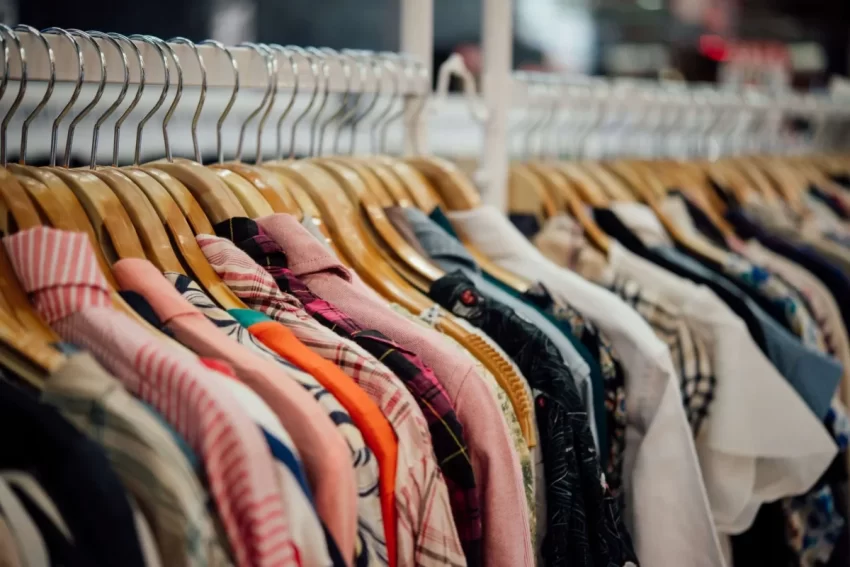Fast fashion is mentioned frequently when you research the topic of sustainability. But what exactly does it mean and what is the reason it’s such an environmental issue? This guide will be able to answer your quick fashion-related concerns and questions.
What is the definition of fast fashion?
Fast fashion can be described as clothes that are made at a reckless pace to keep pace with current fashions.
Brands may speed up production of clothing by using low-quality fabrics that push workers over their limits, causing negative long-term consequences for their short-term financial benefit. The goal is to get fashionable and fashionable styles into the consumers’ in the quickest time they are able to. The clothes are considered to be trendy, popular and attractive.
However, the speed of the product cycle makes it easier for items to be disposed of. Most of the time, they are only worn a few times later. When the next short-lived trend is announced, the cycle continues.
In the industrial age, it was an important stage in the development of quick fashion. In the past, most leather, cotton, and wool garments were created by hand, which was a time-consuming process. Fashion was slow because of the limitations of technology.
Then, new technologies were developed and introduced, including sewing machines. That set the stage for the explosion of manufacturing factories during the 1800s. Clothing became more affordable, simple to make, and more efficient.
From the ’90s until today, an overview of the fast fashion industry’s history
The term”fast fashion” began to be used in the 1990s. New York Times first used the term to describe Zara’s goal to get clothes from the design to retail stores in a mere 15 days.
At the time, Zara, H&M, Topshop and Primark were taking over the high-street fashion. They copied the styles seen in high-end fashions and made them available to everyone — for a only a amount.
Collections no longer matched the seasons. Brands had gone from having four collections each year to 52. New collections are released each day or week. The advertisements constantly remind us of the top fashions of the week. Fashion consumption has increased in the globe, particularly in the West.
Compared to 15 years ago, we are now buying 60 percent more clothes. Not only do we purchase more clothes, but we also dispose of more clothing. The production of clothing has increased by a third and the use of clothing has decreased by 40%.
So, what’s the problem with fashion trends?
The fashion and apparel industry is among the industries that pollute the most. It is responsible for 8-10% of global greenhouse gas emissions. It has negative effects on the lives of individuals as well as the environment that we inhabit.
Fast fashion is unsustainable and is not sustainable for the next generations. This results in massive overproduction, environmental damage and the under- and overwork by factory employees. Fast fashion is ruining the environment.
The overproduction of clothing
Fashion trends are driven by fashion trends. The fashions of luxury fashion, or what’s seen on the faces of celebrities or influential people.
Fashion trends tend to be brief-lived. Fashions and styles quickly attract popularity, but people quickly lose interest when the fashions become a bit dated and are no longer trendy.
This culture of throwing away clothes means that more clothes are sent into the garbage. The only 15 percent of clothes are recycled. More clothing is made than the companies can sell, and there is more clothing manufactured than the people actually require or want.
Costs to the environment that are damaging
Fast fashion is damaging the ecological balance. To meet increasing demand, farmers are forced to make use of ever more toxic chemicals to protect their crops.
Chemicals employed in the fast fashion industry end up in our waterways. 20 percent of the water pollution is due to the production of clothing. Clothing that is discarded in landfill release harmful chemicals into the air until they’re destroyed. This, for synthetic fabrics is nearly never.
Workers in garment factories are overworked and underpaid.
The makers of these clothes make very little pay, are stretched to the limit and are denied fundamental human rights. They are often in hazardous environments and have no other alternatives.
There are also impacts to the health and well-being of workers who are regularly exposed to chemicals that are harmful.
What are the signs to recognize an emerging fashion brand?
Remember these questions when looking at the mall for new outfits. This will help you avoid purchasing clothes that will fall apart quickly.
Does the company use low-quality synthetic materials such as polyester or acrylic? The materials that are cheap will not endure the test of time.
Does the brand utilize trendy colors, patterns or styles that resemble luxury fashions or the fashions that are seen on the runway? The act of blindly adhering to trends can be a sure method to quickly fall out of style.
Do the brands introduce new collections and styles every day, weekly or even monthly? The sheer number of styles available is a telling indication of fast fashion.
Does the brand offer a significant discounts or often alters prices of their merchandise? Sales and quick turnarounds advertise the idea of throwing away clothing.
Does the brand not provide any details about where the garment was created and who made it, as well as under what conditions? In countries with the lowest wages often mean no rights for workers and insecure supply chains.
Brands that are popular for fast fashion
You’ve probably heard of many of the biggest brand names in fast fashion. Here are some of the most notorious brands to steer clear of: H&M, Zara, Primark, GAP, Shein, UNIQLO, Topshop, New Look, Pretty Little Thing and Missguided.
Learn more about how to buy less
You’ll be pleased to know that there’s an alternative that is sustainable and ethical. Slow fashion is a trend that has grown in popularity over the last few years. We’ve compiled this useful information for you regarding slow style.
“Slow fashion” is the notion of creating, designing, and buying high-quality clothing that lasts. Utilizing organic, recycled, and sustainable materials.
It promotes the slowing of production more efficient, less waste, decent wages for workers in the garment industry, and less carbon emissions.
When you become more conscious of the items you purchase and the effect that they have on the environment, it’s possible to transform the way you shop for the better. good Garms provides ethical and sustainable clothing in one location.




